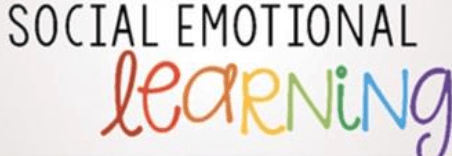Discover how fostering self-awareness enhances students' emotional intelligence, improves classroom dynamics, and equips them with skills for lifelong success in both academics and personal growth.
Self-awareness in the classroom is an essential element of social emotional learning. You may have come across a lot of information regarding social emotional learning, or you might be implementing it in your classroom. There is a wealth of valuable information available about SEL! It's beneficial to understand the fundamental concepts of this framework, as it is filled with practical insights.
In the upcoming posts, I will simplify social emotional learning (SEL) into manageable segments to explore the valuable aspects it provides. This five-part series will take an in-depth look at each of the five CASEL competencies: self-awareness, self-management, social awareness, relationship skills, and responsible decision-making.
The first topic in this series is Self-Awareness. Let’s explore what this initial competency entails! CASEL, an acronym for The Collaborative For Academic Social And Emotional Learning, serves as a fundamental pillar of social-emotional learning. They developed the SEL framework, which is structured around 5 key competencies, beginning with self-awareness.
What is Self-Awareness?
What exactly is self-awareness? CASEL describes it as “The capacity to comprehend one’s own emotions, thoughts, and values, and how these impact behavior in various situations.” (1)
In other words, this competency focuses on understanding ourselves better, which encompasses aspects such as our identity, preferences, strengths and weaknesses, emotions and viewpoints, as well as how our thoughts shape our feelings, words, and actions.
Why is it essential to help students become aware of these aspects within themselves? There are numerous reasons that we will explore in this article.
Why is Self-Awareness Important?
Social-emotional learning focuses on skills that enable students to regulate their emotions and behaviors while building connections with others. To do this effectively, it is essential to understand your inner self and what drives your actions.
Consider this! Can you set goals for yourself if you don't recognize your aspirations? How can you discover ways to soothe yourself if you aren't aware of what triggers your frustrations? Can you articulate an activity you want to share with a friend if you're not conscious of your own preferences?
Numerous students find it challenging to express these concepts independently without guidance. Social-emotional learning (SEL) equips children with the tools to comprehend the workings of their minds and the reasons behind their actions. When students have a clear understanding of themselves, they can:
And much more. These are lifelong skills that children will continue to use into adulthood. Assisting students in becoming attuned to themselves prepares them for success in school and beyond.
Advantages in the Classroom
If SEL and self-awareness contribute to students' success in school, it stands to reason that classrooms can also gain advantages from this. Understanding oneself isn’t only beneficial to individuals; others also reap the rewards of someone else's self-awareness. This is truly beneficial for classroom environments!
Studies have shown that students who participated in a social-emotional learning (SEL) program in school exhibited better behavior in the classroom, enhanced skills for managing stress and depression, and more positive attitudes towards themselves, their peers, and their school environment.
This is completely understandable. As children work on enhancing their self-perceptions and managing their emotions, they gain confidence in their capabilities. Students become more adept at utilizing communication skills. Consequently, their behaviors, attitudes, and relationships improve!
Picture a group of children in a room who struggle to express their emotions. They often act without considering the consequences of their behavior, sometimes reacting impulsively. Some may resort to fighting to assert their desires, make unkind remarks, or disrupt others.
With the introduction of SEL and self-awareness lessons, students start to undergo a transformation. They discover new ways to communicate their needs. They become capable of identifying when they are feeling overwhelmed and understand how to address it. Additionally, they learn essential skills such as sharing and waiting for their turn, as they become aware of the impact their actions have on others.
When students become attuned to their own feelings and needs, they also become more connected to their peers, resulting in a classroom environment that is supportive and unified.
Self-Awareness for Educators
Self-awareness is not only important for students; it is also a valuable area of growth for teachers. Educators can harness their own self-awareness for self-care and to enhance their skills in teaching social-emotional learning while effectively engaging with their students.
Ways for Teachers to Cultivate Self-Awareness
Educators who cultivate their own self-awareness can significantly enhance their teaching and classroom environment. What does it mean for teachers to be self-aware? Being in tune with oneself can assist in uncovering or identifying the following aspects:
And there's so much more to consider. Ultimately, when you take the time to connect with what motivates and inspires you, you can progress and develop both as an educator and as a person. Your self-awareness can bring significant advantages to both you and your students!
Explore this topic further to learn more about the benefits of social emotional learning for teachers!
Instructing on Self-Awareness
So, how can you teach self-awareness to your students? Continue reading! The remainder of this post will provide strategies and lesson ideas.
The initial step in teaching self-awareness involves helping students understand what it means and how it can contribute to their success in the classroom. This can be achieved by incorporating the term “self-awareness” into the classroom vocabulary and culture. Engage in discussions about self-awareness regularly!
Incorporate self-awareness check-ins with your students. This can involve simple reflective questions during class discussions or in one-on-one conversations. Encourage them to consider questions such as, how am I feeling? What am I thinking? What do I need? This approach allows students to pause and reflect on their thoughts and emotions.
To develop self-awareness, students must be guided on how to reflect on their feelings, thoughts, and behaviors. For instance, pointing out specific actions in real time, such as, "I noticed your classmate is trying to speak and she got interrupted; how did your actions impact her?" or "I see you're struggling to stay focused at the moment. How does your body feel, and what do you need right now?" These brief discussions about self-awareness encourage students to think critically about their inner experiences.
If you are seeking ideas for specific activities that can assist you in implementing these self-awareness strategies, take a look at the following suggestions.
"I Wonder" as a Tool for Fostering Self-Awareness and Regular Check-Ins:
This is an easy activity that requires minimal effort and can be utilized throughout the day. You can kick off the day with an “I wonder” question during a morning meeting. As the children settle into their seats, just ask, “I wonder how we are feeling this morning. Let’s take a moment to check in with ourselves. I wonder how our energy levels are. Or, I wonder how our bodies feel. I wonder how our minds are doing, or how we are feeling emotionally today.”
Take a moment to pause after each “I wonder” statement. Students can choose to keep their thoughts private, or they can share their feelings by giving a thumbs up or thumbs down.
Following this, you can also introduce “I wonder” questions after various activities, such as transitioning from lunch to the afternoon, after an exam, or after finishing a challenging task.
Incorporating simple check-ins throughout the day fosters self-awareness by allowing students to take a moment to reflect on their internal experiences.
Methods for Developing Self-Awareness Through Mindfulness or Guided Imagery Activities:
Meditation is an excellent method for taking a break and discovering straightforward self-awareness techniques. Often referred to as mindfulness or guided imagery, this practice enables students to sit back, unwind, and contemplate internal reflections that assist them in becoming more aware of their thoughts and feelings.
Mindfulness can help individuals become aware of their bodily sensations and combine these observations with breathing techniques to navigate their feelings. For instance, you might say, “How does your body feel? Is your heart beating fast? Are your hands damp? Take a moment to relax by inhaling for 3 seconds and exhaling for 3 seconds…”
Other meditation techniques involve asking a series of questions that encourage students to examine their feelings while they breathe, followed by a discussion on steps they can take to reflect on various aspects of their experience. For instance, it might begin with, “Let’s center ourselves in this moment by becoming aware of our surroundings… First, pay attention to the sounds around you…. Then, notice what you can touch… Next, focus on the scents that you can detect…”
Guided imagery creates a scenario where children envision themselves as an object and mimic the actions of that object to enhance their self-awareness. For instance, it could be phrased like this: “Picture yourself as a magnificent flower in full bloom. You are standing tall, with vibrant colors, and you are healthy. How might you appear when you are feeling weary? Are you like a flower in need of water? Are your petals beginning to wilt? Do you feel as though you are drooping?”
Journaling to Utilize Self-Awareness Skills:
Journaling serves as an excellent tool to engage children in reflection and action regarding self-awareness. Maintaining a journal provides them with a space to express the concepts they have learned and articulate them in their own language. This personalization fosters significant connections to self-awareness.
Students can use a regular notebook for journaling, or they may have a dedicated journal titled “I Feel When” or “My Feelings Journal,” where they can describe their emotions, the reasons behind those feelings, and strategies to manage their emotions.
The class can also engage in unique journaling activities. For instance, they might listen to various styles of music and express their observations and feelings about it, or how it prompted certain thoughts. Journals aren't solely for writing; students can also create drawings or posters related to a self-awareness skill they've learned. These visuals can be displayed in the classroom to remind them to apply that skill in the future.
Think about incorporating mindfulness into your classroom! It complements social-emotional learning beautifully and serves as an excellent tool for fostering calm and relaxation during a hectic school day. By utilizing these best practices, your students will benefit from a wonderful mindfulness experience.
Looking for Resources on Self-Awareness for Your Classroom?
My social emotional learning curriculum clearly teaches students about self-awareness and offers practice opportunities for various aspects of self-awareness.
These lessons are also available in my FULL YEAR curriculum, which offers the best value:



